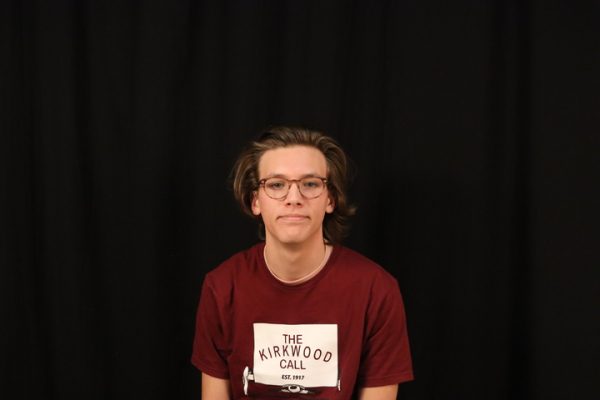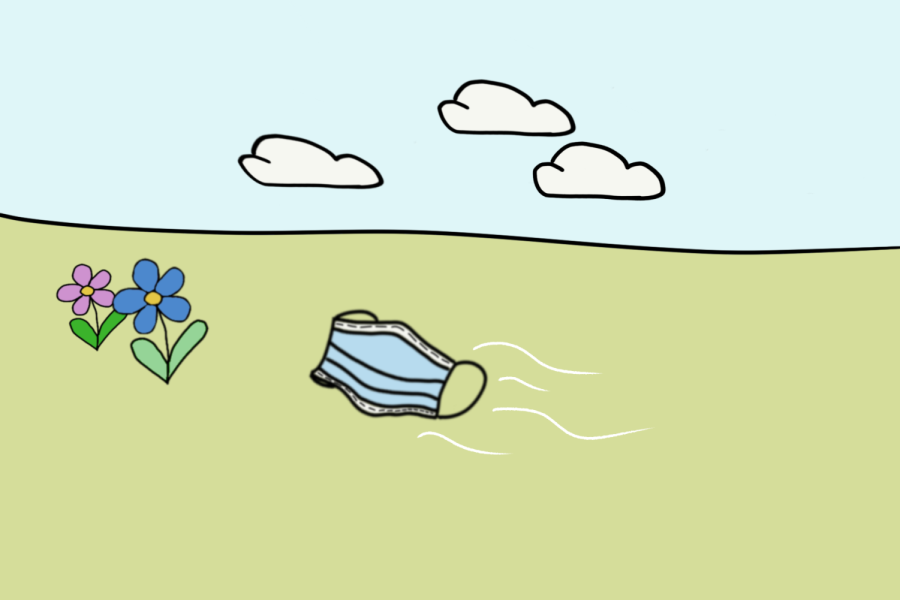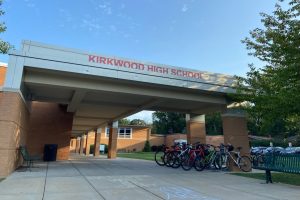Masks: to wear or not to wear?
As spring rolls around and KSD’s mask-recommended policy takes effect, many have stopped wearing masks.
The era of mask requirements is, for the moment, over. KSD’s mask-required policy was replaced with a looser mask-recommended policy. The decision has changed the face of the school and arrives at a time when many call for a return to normalcy as part of a debate that has gripped the nation since the very beginning of the pandemic.
The average number of new COVID-19 cases in STL County residents decreased by 56 percent between February 15 and February 28, according to the St. Louis County Department of Health. In response to these trends, the Board of Education approved a plan to no longer require masks in KSD schools starting Feb. 22. The decision sparked controversy among students, teachers and parents.
Lucas Ravenscraft, KHS social studies teacher, has continued to wear a mask indoors after the mask-recommended policy went into effect. He said he feels a social responsibility to his community to do so.
“Omicron is still circulating,” Ravenscraft said. “Cases are going down, but I don’t think we’re totally over that wave yet. I see it as my obligation, as a member of the St. Louis community, to try and reduce spread and to reduce the burden that’s being placed on hospitals.”
Diego Guzman, senior, said he does not have strong opinions on masks. He said he’ll wear a mask if required to, but won’t if not.
“I have the mentality of, ‘If I’m forced to, I will,’” Guzman said. “I’m not against it, but I’d much rather not [wear a mask]. I can see why people are against it [and] I can see why people are for it.”
After two years of the COVID-19 pandemic, removing masks seems strange to some. Leyna Davis, freshman, said she doesn’t feel safe maskless. She has continued wearing a mask at school to protect herself and her family.
“I am boosted and vaccinated, so I have more protection than some people, but I still don’t feel comfortable going maskless,” Davis said. “I have a lot of younger cousins and older [family members], and I just don’t want to put them at risk.”
Similar to Guzman, Joshua Denckhoff, sophomore, said he is not wearing a mask at school currently, but doesn’t have strong opinions on mask-wearing. He said he decides based on other people’s decisions.
“Some of my friends’ parents have health problems, and they still wear masks at school,” Denckhoff said. “If I go to their house, I’ll wear a mask around them to respect their rules. I respect what other people think.”
A survey conducted by TKC on Feb. 23 found 67.8% of students and 65.7% of staff members “generally wore masks indoors.” An additional poll on TKC’s Instagram on March 1 found the ratio of mask-wearers to non-wearers at 57% to 43%. The shift may suggest changes in decision-making concerning masks. Additionally, 49.7% of mask-wearers did not currently have a plan to stop wearing a mask. And while 5.4% planned to remove their mask before spring break of 2022, 15.6% planned to stop wearing one after spring break. The final 29.3% expected not to wear it starting next school year.
Two years have passed since COVID-19 changed everything. The past twenty four months have been the battle of a return to a “normal,” to the way things used to be. The BOE’s decision to end the mask mandate is the latest step in that fight, whether or not it is the “correct” decision.
Your donation will support the student journalists of Kirkwood High School. Your contribution will allow us to purchase equipment and cover our annual website hosting costs.

He/Him
Hobbies and Interests: I enjoy reading, watching the UCL after school, listening to music at 2 am, consuming TikTok slideshows, and watching...










